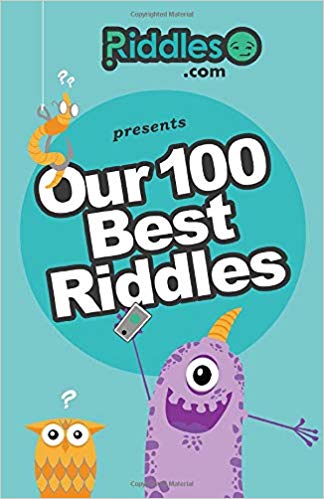
Riddle:
What two whole, postive numbers have the same answer when multiplied together as when added together?
Answer: 2 and 2.
Riddle:
What is the most useful instrument in a mathematics teacher's tool kit?
Answer: Multi-pilers!
Riddle:
What happened to the plant in the math classroom?
Answer: It grew square roots, of course.
Riddle:
What do you call two math friends?
Answer: Algebros!!
Riddle:
What three whole, positive numbers have the same answer when multiplied together as when added together?
Answer: 1, 2 and 3. 1 x 2 x 3 = 1 + 2 + 3 = 6.
Riddle:
I am finite while standing, but infinite while laying. What am I?
Answer: The Number Eight
Riddle:
Take eight small sticks, four of which are half the length of the other four. How can you make three equal squares out of the sticks?
Answer: Use the longer four sticks to be sharing sides between the squares and at the end their should be three intertwined squares.


Riddle:
Peter is 4 and his little brother is 2, half is age. How older will Peter's little brother be when he is 100?
Answer: 98 because there's only 2 year difference.
Riddle:
What is the next number in the series?
7,645 5,764 4,576...
Answer: 6,457. The last digit is moved to the front to make the next number.
Riddle:
What arithmetic symbol can be put between 2 and 3 so that the resulting number is greater than 2 but less than 3?
Answer: A decimal point. 2.3 is greater than 2 and less than 3.
Riddle:
What did one math book say to another?
Answer: I have so many problems.
Riddle:
If three cats catch three mice in three minutes, how many cats would be needed to catch 100 mice in 100 minutes?
Answer: The same three cats would do. Since these three cats are averaging one mouse per minute, given 100 minutes, the cats could catch 100 mice.
Riddle:
What number do you get when you multiply all the numbers on a telephone's number pad?
Answer: 0, anything multiplied by 0 will equal zero.
Riddle:
A man is walking down a road with a basket of eggs. As he is walking he meets someone who buys one-half of his eggs plus one-half of an egg. He walks a little further and meets another person who buys one-half of his eggs plus one-half of an egg. After proceeding further he meets another person who buys one-half of his eggs plus one half an egg. At this point he has sold all of his eggs, and he never broke an egg. How many eggs did the man have to start with?
Answer: 7 eggs. The first person bought one half of his eggs plus one half an egg (3 1/2 + 1/2 = 4 eggs) This left him 3 eggs. The second person bought one-half of his eggs plus one half an egg, (1 1/2 + 1/2 = 2 eggs) leaving the man 1 egg. The last person bought one-half of his eggs plus one-half an egg, (1/2 + 1/2 = 1 egg) leaving no eggs.
Riddle:
Why is the obtuse angle always cranky?
Answer: Because it is never right!
Riddle:
What number do you get when you multiply all of the numbers on a telephone's number pad?
Answer: Zero. Anything multiplied by zero will equal zero.
Riddle:
A new medical building containing 100 offices had just been completed. Mark was hired to paint the numbers 1 to 100 on the doors. How many times will Mark have to paint the number nine?
Answer: The answer is 20! 9, 19, 29, 39, 49, 59, 69, 79, 89, 90, 91, 92, 93, 94, 95, 96, 97, 98, 99.
Riddle:
If you have nine fish in a fish bowl and 3 drown how many fish do you have left?
Answer: Nine because fish don't drown.
Riddle:
A man flipped a coin 9 times and every single time it landed on heads. If the man flipped the coin again, what is the chance that it lands on heads?
Answer: 50%. It's always 50%.
Riddle:
What table has not a leg to stand on?
Answer: The multiplication table or periodic table of elements.

